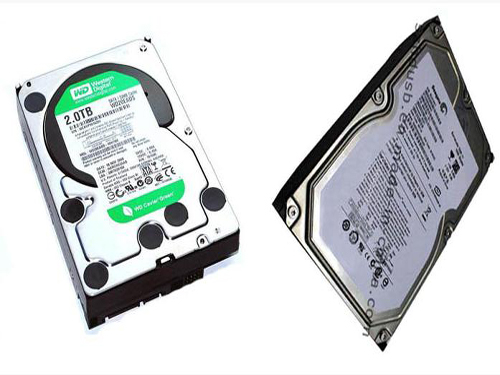 In the past two months, the hard disk industry has thrown two blockbusters in succession, taking away people's attention. One was on March 8, 2011, Western Digital spent $4.3 billion to acquire Hitachi hard drives; the other followed for about a month, as if following the wind and resembling pique, on April 19, Seagate officially announced the acquisition of Samsung's hard drive business. As the oldest brothers in the two industries, this move cannot but make people guess that the two battles are going to enter the white-hot phase. The oligopolistic era of hard drives is coming?
In the past two months, the hard disk industry has thrown two blockbusters in succession, taking away people's attention. One was on March 8, 2011, Western Digital spent $4.3 billion to acquire Hitachi hard drives; the other followed for about a month, as if following the wind and resembling pique, on April 19, Seagate officially announced the acquisition of Samsung's hard drive business. As the oldest brothers in the two industries, this move cannot but make people guess that the two battles are going to enter the white-hot phase. The oligopolistic era of hard drives is coming? Let's review the background of these two acquisitions.
Prior to the acquisition, the hard disk industry presented five major hegemony situations. The Western Digital shipments ranked first, followed by Seagate, followed by Hitachi, Samsung and Toshiba.
Once upon a time, for computer DIY enthusiasts, Seagate was the oldest brother in the hard disk world. In December 2006, Seagate successfully acquired Maxtor and laid the foundation for its first brother. However, the 11th generation (7200.11) firmware door broke out in early 2009. Events (unable to detect hard disks, computers unable to boot, blue screen, suspended animation, etc.), and the attitude of Seagate to users, caused many old users to switch to the embrace of other manufacturers, and subsequently launched 12 generations of products, according to media reports. Still encountering more or less problems, this has become one of the important reasons why Seagate has left a throne. By 2010, it was eventually caught up by the Western Digital.
Western Digital, in the minds of most people, is like a rising star. It does not mean that it is a newcomer who has just entered the hard disk industry, but that it has been known at an impressive pace in recent years. There are roughly two points worth noting: 1. Seagate's firmware door has caused many users to switch to other hard drives, many of which have been lost to the Western Digital; 2. Western Digital’s products are structured in distinct layers and are divided into “green†and “blueâ€. Disk" and "black disk." "Green plate" is environmentally friendly, with low noise and general performance. The "black plate" has large energy consumption, large noise, and the best performance. The "blue plate" is centered. This layered strategy allows users with different requirements to find the hard disk that suits them. For these reasons, in 2010, Western Digital finally caught up with its old rivals for many years to become the hard disk leader.
Let's talk about Hitachi HDDs with pretty good sales. In 2002, Hitachi relied on the acquisition of IBM hard drives to enter the industry, and continued to grow. The biggest impression Hitachi's hard drives give is: cheap, quality clearance, but this still does not stop the outcome of the acquisition.
In the past two years, with the development of technology and the improvement of hardware, solid-state drives (SSDs) have emerged as new storage technologies in addition to traditional hard drives. Compared with conventional hard drives, solid-state drives are fast, noiseless, and capable. Low cost, small size, and light weight, but high prices have been the biggest obstacle to its popularity. As a result, hybrid hard disks are created, which combines the advantages of fast solid-state drives, low power consumption, and relatively inexpensive prices. Whichever one seems to indicate the future direction of hard drives.
Western Digital CEO John Coyne has said that at this stage, compared to SSDs, it is more optimistic about hybrid hard drives; Seagate also introduced Momentus XT hybrid hard drives, and in this acquisition-related agreement has this statement: "According to the NAND flash supply Under the agreement, Samsung will supply its semiconductor products to Seagate’s enterprise-class solid-state drives (SSDs), solid-state hybrid hard drives and other products. According to the hard disk supply agreement, Seagate will supply hard drives for Samsung’s personal computers, notebooks and consumer electronics products.†From this it can be seen that the two old people of this hard disk have their own wishful thinking. Western Digital wants to further expand the gap with its rivals through acquisitions, and Seagate hopes to regain its throne by SSD. We can expect that this type of duo contending for hegemony will continue for quite some time.
Professional Aluminum Cosmetic Case, Professional Cosmetic Case, Case for Makeup
Aluminum Case With Cantilever Trays Co., Ltd. , http://www.nsuniversalcase.com
